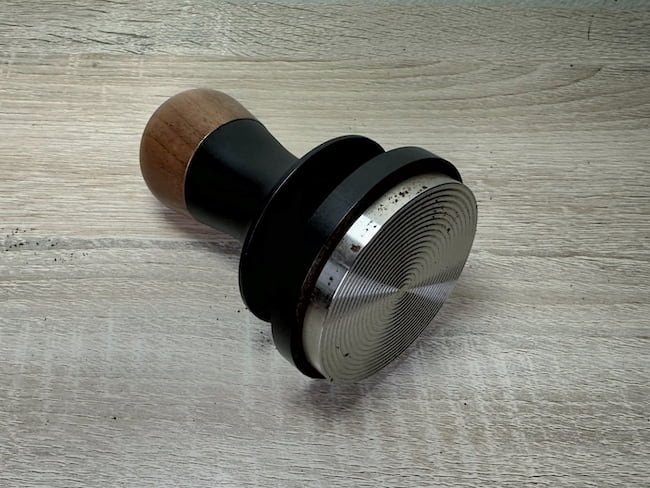I often advise people to steer clear of espresso unless they’re looking for a new hobby. Making espresso demands significant effort, alongside an array of tools and gadgets.
Prepare to bid farewell to your spare time and hard-earned money 😔
In my view, some espresso accessories are essential for success, while others fall into the “nice-to-have” category.
Below, I’ve shared the gadgets I personally use to pull the best shots possible. For clarity, I’ve organized the list into three categories:
Overview: The Essential equipment
Must-have (Jump directly ⬇️)
- Knock-box
- Tamper
- Scale
- Milk Pitcher
Nice-to-have (Jump directly ⬇️)
- Leveler
- Blind shaker/dosing cup
- Precision basket
- Naked Portafilter
- WDT tool
- Puck screen
- Funnel
- Shot mirror
Cleaning products (Jump directly ⬇️)
- Cafiza
- Blind Filter
- Brush
- Bar mat
Heads up! If you’re planning to start a café or brew a lot of coffee, you can get this starter kit from Seattle Coffee Gear with everything you need.
Must-have
1: Knockbox
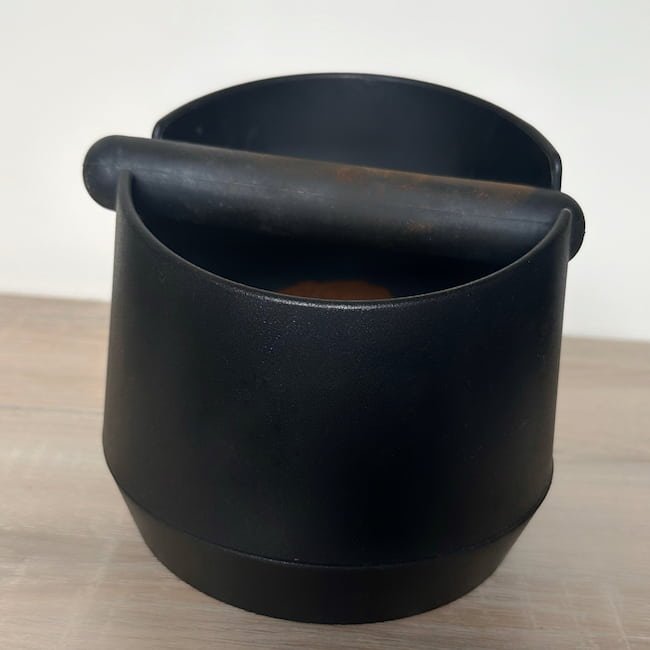
The first accessory on the list is a knock box. It might not seem crucial, but if you have ever tried to get a puck out of the portafilter and into the trashcan, you know it’s a massive headache.
So I consider the knock box a must-have — not just a nice-to-have.
You can get this black and minimalist one from Seattle Coffee Gear, but the truth is that most models will do the job just fine. Even these ultra-budget ones from Aliexpress.
2: Tamper
Next up, we have the tamper. Most espresso machines come with flimsy tampers that don’t provide much in terms of tactile feedback.
Today, there’s a gazillion of models available, so there’s something for every taste.
However, before ordering one, you need to make sure that it fits your basket/portafilter.
Some tampers are precision tampers, meaning they are just a few millimeters bigger than the standard size – so 58.4 mm instead of 58.0 mm.
The extra millimeters mean that the puck’s edges also get compressed, and you won’t have to worry about side-channeling.
I have many tampers but think that this 58.3 version from Normcore, which also has built-in auto-level is great.
3: Espresso scale
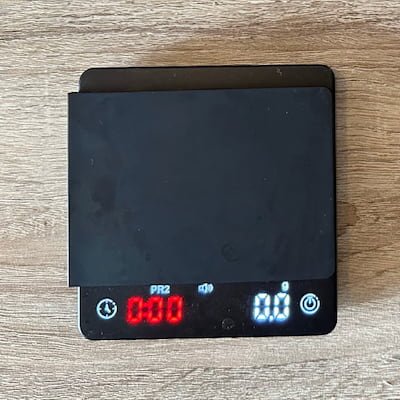
A scale is necessary if you want to be serious about your shots.
Sure, you can eyeball the shot or use volumetric measurements if you’re going to use it for a cappuccino, but I wouldn’t recommend that approach to burgeoning baristas.
If you want to follow an exact 1:2 ratio, the only way to do it consistently is by using an espresso scale.
Of course, you can use any digital scale, as long as it can fit on your drip tray, but I suggest getting one created specifically for coffee since it will have a timer. A timer is useful for dialing in and can help with consistency.
You don’t need an expensive model, this cheap one from SearchPean has served me well. It’s so small that it even fits the narrow drip tray of the Gaggia Classic!
Miicoffee sells it under their own brand here or get it on Aliexpress and Amazon.
4: Milk Pitcher (cappuccino accessory)
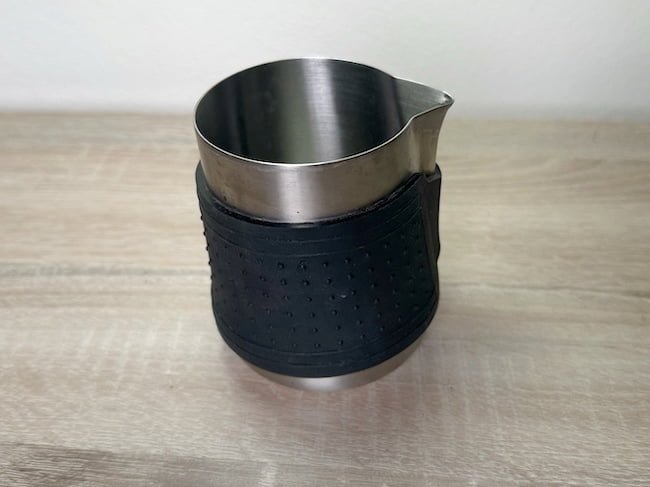
If you want to steam some milk, you’ll need a pitcher. Sometimes, they come with the espresso machine as an accessory, but often, you’ll have to buy a separate one.
It doesn’t have to be a fancy brand or innovative design.
You should be fine if you get the correct size and it has a suitable spout for pouring latte art.
There are some latte art pitchers without handles or with a more narrow tip, but whether that’s your style is totally up to personal preference.
One thing to keep in mind, though, is size. You want a pitcher that fits your typical dose. It should be quite a bit larger, so there’s room for the milk to swirl around in a vortex.
I like this handleless version
👉 Also available on Aliexpress.
Nice-to-have
5: Leveler
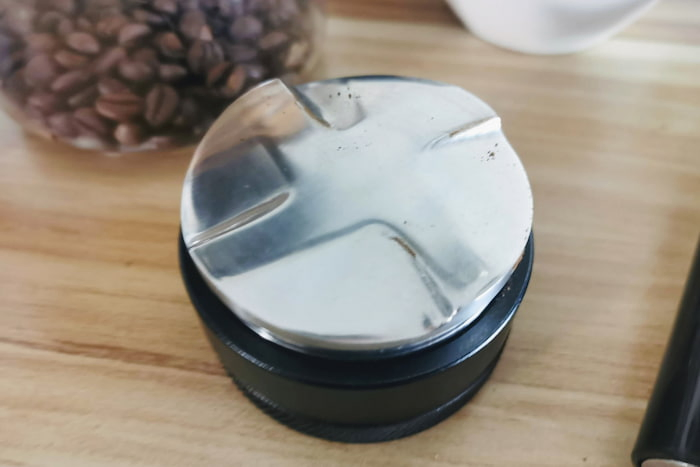
In the last couple of years, levelers and special distribution tools have become more and more common. Nowadays, I’d say that they are mainstream.
Levelers help you with consistency. Just spin it a few times, and you have an even area to tamp on.
(they are also weirdly satisfying to use. I see them as the coffee world’s version of fidget spinners)
Sometimes, I just use a leveler instead of a tamper. If you adjust the leveler correctly, you can get it to compress the grounds into the perfect puck. This is easy and repeatable, and I find that my extractions are often more even and less prone to channeling this way.
6: Blind shaker

Grind distribution is crucial when it comes to pulling consistent shots.
For that reason, more and more baristas are shifting away from grinding directly into the portafilter. Instead, they use espresso tools such as a dosing cup or a blind shaker.
Using a blind shaker helps break up clumps, ensuring an even extraction without dry pockets of coffee grounds.
You grind into the blind shaker, then put the lid on and give it a shake. Then place it on top of the portafilter, lift the piston, and then the grounds will fall into the basket while being perfectly fluffy.
In a sense it works like both a funnel and a shaker at the same time. Pretty smart!
7: Naked/Bottomless Portafilter
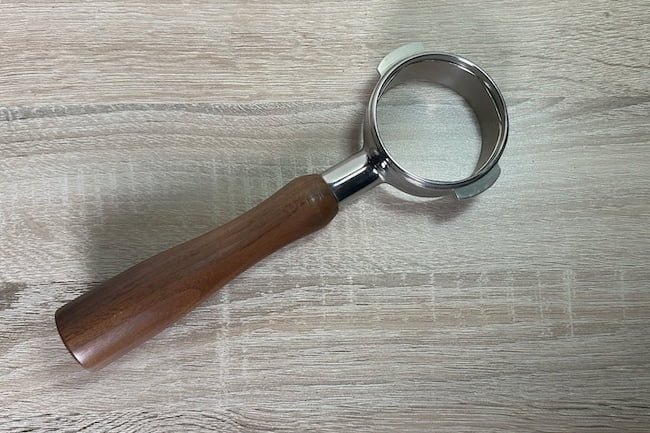
A naked (or bottomless) portafilter is part utility and part for aesthetic reason.
There’s no doubt that the massive popularity of naked portafilters is due to the unparalleled awesomeness of watching espresso syrup drip out from the basket.
However, naked portafilters are also helpful when you begin your espresso journey since they will give you valuable feedback about your dosing, distribution, and tamping.
Many flaws will go unnoticed if you’re using a typical portafilter.
I think another significant advantage of naked portafilters is that they make it much easier to take out the basket so that you can clean it after every shot.
8: Precision basket
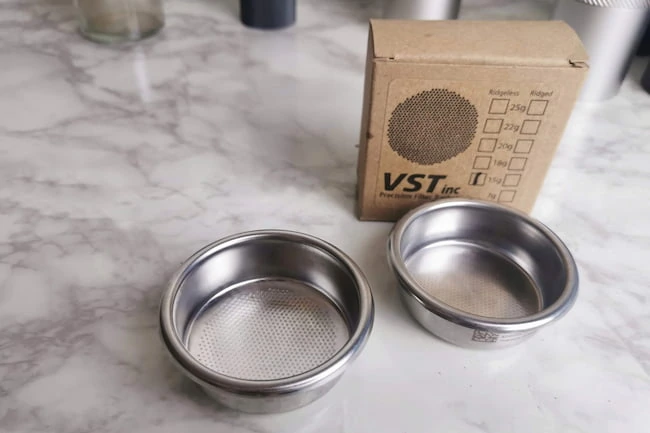
A precision basket is another accessory most home-baristas tend to invest in sooner rather than later.
The baskets that come with entry-level espresso machines typically have tiny imperfections.
Precision baskets rely on unique technology to create perfectly perforated and uniform holes, which will help with consistency and evenness.
There are two big brands that most people end up using: IMS or VST. You can get them for different dose sizes and diameters. They also produce both ridgeless or ridged baskets.
It’s worth investigating before you order a basket since they may not fit all portafilters.
9: WDT tool
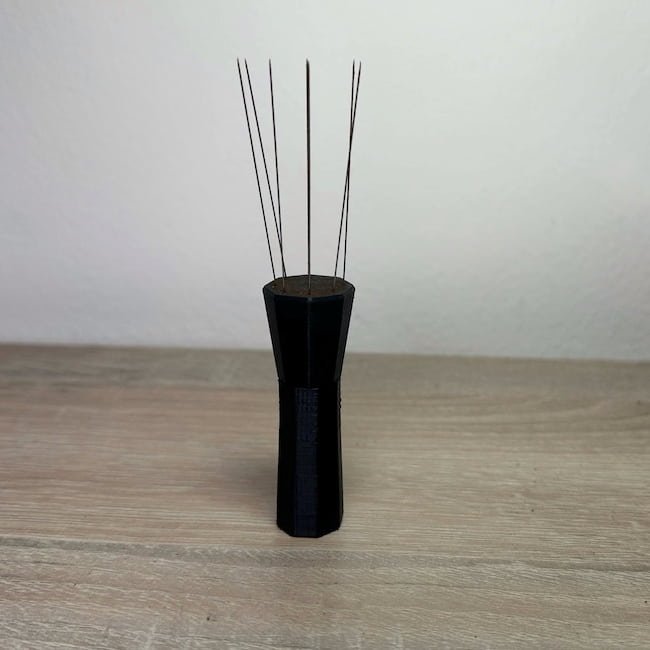
WDT, or Weiss Distribution Technique, is a technique used by baristas to ensure an evenly distributed shot of espresso.
The result is an evenly distributed shot of espresso with no channels or dry spots. WDT is a popular tool among baristas and coffee enthusiasts alike, and it is frequently used in competition settings.
To use WDT, the barista obviously needs a WDT tool. In its most basic form, you can use a needle or bent paperclip to break up any clumps in the coffee grounds.
However, today there’s a whole range of designs available. There are even some 3d printed ones out there that do a great job.
10: Puck Screen
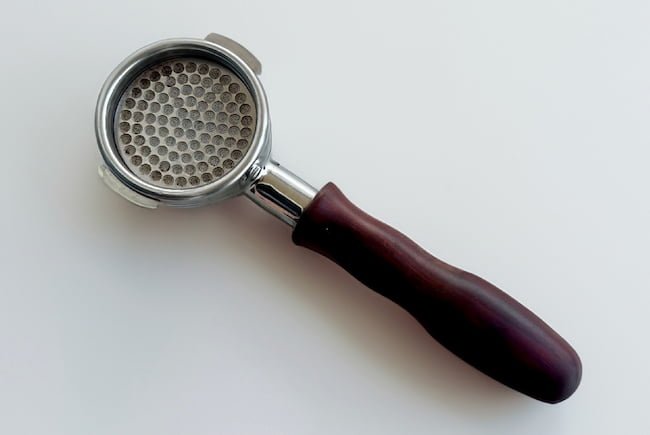
The espresso puck screen is a relatively new invention, but it has quickly become one of my favorites.
The puck screen’s main purpose is to keep your espresso machine’s water dispersion screen clean, and it does a great job at that! Also, I have noticed that pucks tend to be firmer and cleaner in the portafilter, making them easier to knock out without creating a mess.
However, many home baristas claim that the puck screen also helps to preserve puck integrity and get a better distribution of water. I actually believe them on this one; it really seems to improve shots.
Considering the cheap price of puck screens and how much easier they make your life, I am a fan.
Check out my in-depth article about puck screens here.
Get this special Ikape puck screen on Amazon or a Weber Workshop version on Prima Coffee.
11: Funnel

If you’re a coffee geek, then you know that making a great espresso can be messy. So, if you want to keep your counter clean, you need a funnel.
An espresso funnel is designed to fit snugly onto a portafilter, and it helps to get all those messy grounds from the grinder or dosing cup into your portafilter without creating a mess.
Plus, if you’re using a WDT tool, having a funnel is also helpful, so you don’t create a mess when you’re fluffing up the grinds. You could say that the two almost go hand in hand.
PS: As with many other espresso-related gadgets, you need to ensure you get a funnel in the right size. So a 54 mm Breville portafilter should be paired with one in the same size!
12: Shot mirror
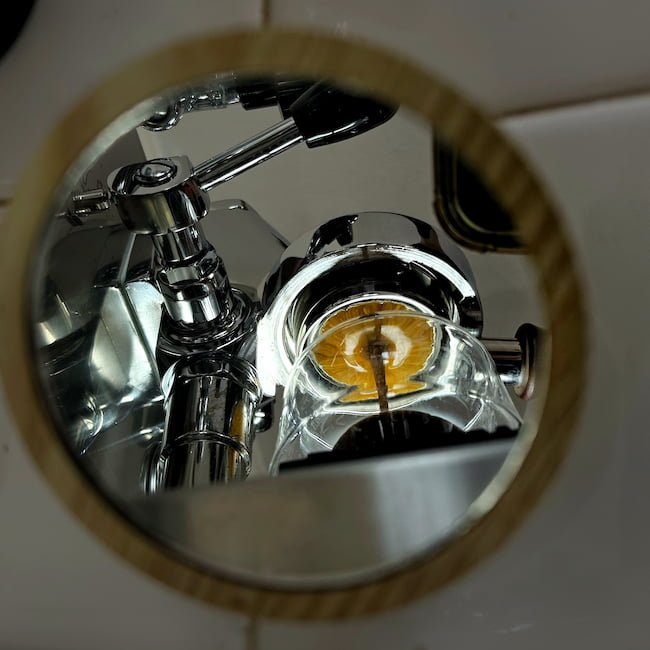
A shot mirror is the quintessential “nice-to-have” for espresso enthusiasts. This tool allows you to monitor the extraction process in real time, but it’s only beneficial if you’re using a bottomless portafilter. With standard portafilters, there’s not much to observe. However, observing the extraction through a bottomless portafilter can provide valuable insights into your dosing and distribution practices. It also offers clues about the grind size and the degassing level of your coffee.
While the shot mirror isn’t strictly necessary, it’s far from useless. Admittedly, it leans towards the decadent side. Yet, there’s nothing quite like witnessing a flawless bottomless extraction without the need to contort your neck or kneel down. This tool makes it possible, adding a layer of convenience and coolness to your espresso-making experience.
Cleaning equipment
13: Espresso machine Cleaning powder
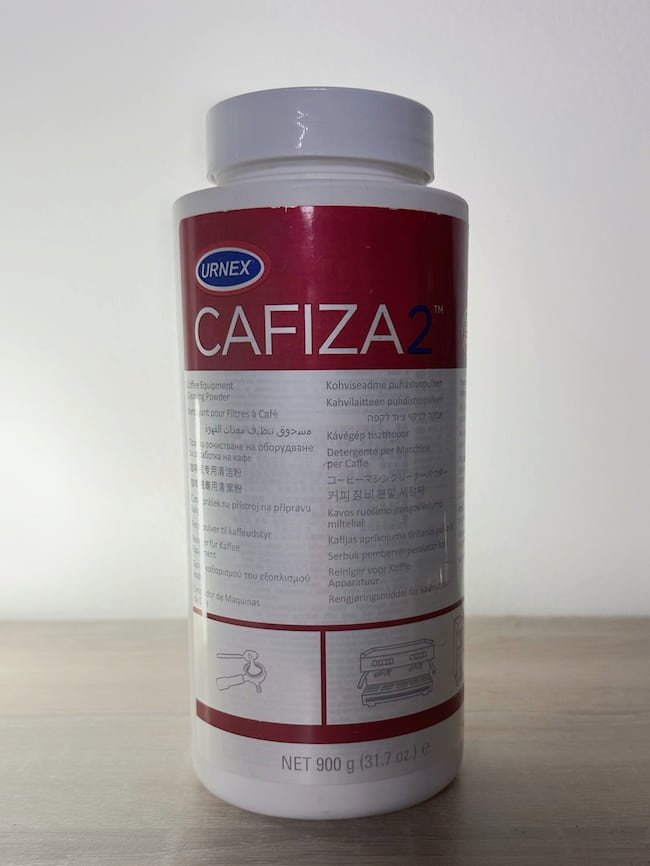
Espresso is messy and dirty. And the enemy of good coffee is rancid coffee oils. So keep your equipment clean.
Cafiza is the preferred cleaning product in the industry, and I’ll be pretty conservative here and suggest you get a bottle of this stuff. It just works. It’s scary how efficient it is at cleaning coffee stuff. There are some other brands out there that I’m sure work fine, but I don’t have experience with them. Cafiza does the job. I’d recommend you get the powder instead of capsules.
Get it on Prima Coffee
14: Cleaning brush

A cleaning brush is also pretty much necessary.
The shower screen and the brew head will get messy quickly when you start brewing.
For daily maintenance between shots, it’s convenient to have a long clean brush that can remove particles stuck on the screen. If you don’t brush the screen, the water flow will be uneven, which will affect your shot negatively.
Get it on Amazon or Aliexpress
(the other end of it doubles as a scoop for espresso cleaner such as Cafiza, which is pretty handy!)
15: Backflush basket / blind filter
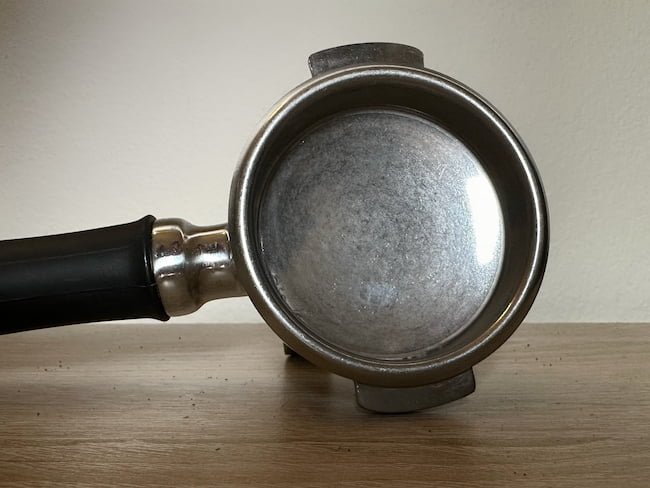
A backflush basket for cleaning the espresso machine is a cheap but necessary gadget for most serious espresso machines, although this cleaning method can only be done with machines that have a solenoid valve.
By inserting the non-perforated filter basket into the portafilter instead of a regular basket, you can utilize the machine’s pressure to blow up hot water into the dispersion screen and brew head. This will remove coffee grounds and coffee oils.
Usually, a small scoop of cleaning powder such as Cafiza is added to the backflush basket. Make sure to rinse off with several cycles of hot water after cleaning with detergent.
You can get it from Seattle Coffee Gear.
Again, make sure to get the right size for your portafilter!
16: Espresso Tamping Mat/bartender mat
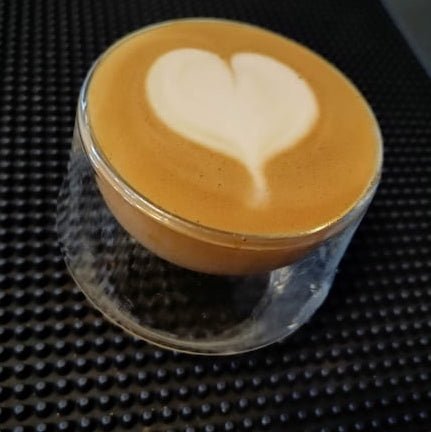
A small tamping mat is a nice touch, but it’s not necessary to make good coffee. Maybe your portafilter or your kitchen counter will stay nice for a more extended period if you have one.
However, one thing that I think is very convenient is an oversized heavy duty bar mat.
The reason you should consider a big mat is that espresso gets so messy.
Coffee grounds quickly become super annoying when they are in the wrong place (basically, anywhere else besides your basket), so it’s nice to have a mat that will help you trap many of these particles. The same goes for small splashes of hot water or steam. A mat will make cleaning and overall workflow a lot easier.
Simultaneously, a rubberized surface is also just lovely in general when you have a lot of heavy metallic things like levelers, tampers, portafilters, and so on. You don’t want these things to slide around on the counter while you’re working.
Mats can also help protect your counter, so having your grinder and machine on one can be nice.

